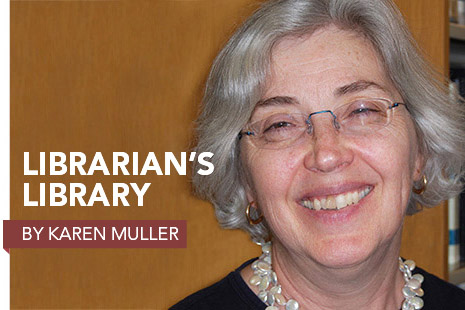
A thread through ALA President Maureen Sullivan’s mission has been “leadership.” Leadership takes many forms throughout our professional lives. We lead colleagues to accomplish the work of our libraries; we lead community groups to advocate on behalf of the library; we lead teams to learn new skills or to adapt a service in new ways. The skills of leadership encompass far more than marching at the head of the parade, as this selection of recent publications shows.
From communication skills to mentoring, to learning to supervise, to managing change, the essays collected by Robert Farrell and Kenneth Schlesinger for Managing in the Middle provide a selection of practical discussions and case studies. One group—“Middle Management 101”—centers on the basics of starting out as a middle manager, with insights into communication skills and tips for continuous learning. The essays forming the “Middle Ground” look at project planning, productivity, and performance management—areas even seasoned managers can learn from. Finally, the “Empowerment” group looks at the importance of mentoring and team building. Each essay has a short bibliography, and there is a bibliography of general management books as well.
Indexed. ALA Editions, 2012. 192 p. $55. pbk. 978-0-8389-1161-7
“Profundity.” A word you don’t see often, but it embodies a key component of the skills and tools presented by Deborah D. Levitov and the other essayists in Activism and the School Librarian: Tools for Advocacy and Survival. Advocacy is about more than providing cost-benefit analysis. It is about engaging in community activism to bring conversation about the value of the school library program to the forefront. Getting there entails making changes to transform the school library program, developing the policies and infrastructure to support the vision, and most of all taking the message to the groups who can help. Tools included are numerous worksheets and bibliographies.
Indexed. Libraries Unlimited, 2012. 123 p. $45. pbk. 978-1-61069-187-1 (Also available as an ebook.)
On the public library front, Valerie J. Gross describes a communication strategy that helps position the public library as an education provider. Transforming Our Image, Building Our Brand: The Education Advantage teaches the “Three Pillars Philosophy” employed by the Howard County (Md.) Library System to strengthen its role in the community. The three pillars are self-directed education, research assistance and instruction, and instructive and enlightening experiences. Reframed with that lens, projects became partnerships and other services were renamed, with measurable results. Before and after documents, along with rejected messages, make the strategies adaptable in other settings.
Indexed. Libraries Unlimited, 2012. 169 p. $48. pbk. 978-1-59884-770-3 (Also available as an ebook.)
We’ve heard it before. Our services must reflect our communities’ needs. But what do we need to know in order to do this? The essays assembled by Carol Smallwood and Kim Becnel in Library Services for Multicultural Patrons: Strategies to Encourage Library Use offer perspectives and examples for revamping existing programs to be used by increasingly diverse clienteles. One place to start is by building partnerships with the communities in the service areas; another is to reach out to students in the community, particularly teens who may be the best avenue for reaching their parents. This kind of outreach necessitates reviewing collection patterns, signage, computer instructions, and the on-screen messages as well. It means building new collections, such as graphic novels that are approachable by the English-language learner, or genealogical tools for tracing family histories in countries and cultures outside Europe. And it may, as one chapter head suggests, compel you to “Risk Looking Stupid,” or being willing to learn—and stumble—along with the patron you’re assisting.
Indexed. Scarecrow Press, 2012. 352 p. $65. pbk. 978-0-8108-8722-0 (Also available as an ebook.)
Apps may be imperfect, but they are proving useful during e-reference encounters. Rethinking Reference and Instruction with Tablets, a guide in the Library Technology Reports series by Rebecca K. Miller, Carolyn Meier, and Heather Moorefield-Lang, examines the rise of the app and the tablet as library tools. One case study describes a roving reference service at the University of Huddersfield in the UK that brings information directly to students wherever they are in the library. Also covered is the importance of conveying traditional information literacy and evaluation skills in the tablet environment and integrating that instruction with the curricular use of tablets by the academic departments.
Not indexed. ALA TechSource, 2012. 60 p. By subscription, 8 issues a year for $325. pbk. 978-0-8389-5863-6 (Also available in e-formats.)


